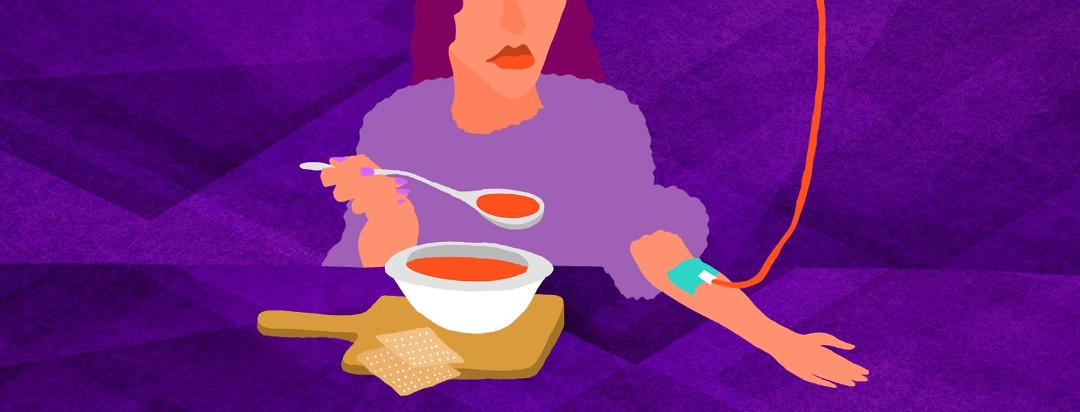'Alphabet Soup': Explaining ECP for GVHD of the Skin (Part 1)
When I tell people that I had four stem cell transplants, I have to start with the basics if they don’t know about blood cancer. I explain what a stem cell is, then what a transplant is, and then why it isn’t called a bone marrow transplant like when I got my first one in 2003.
It gets more complicated when I explain that my first transplant was autologous (or auto), using my own stem cells, and the three that followed were allogeneic (allo) using stem cells from a donor. Then, since I am still getting treatment – not for cancer, but for a side effect or “after effect,” – I explain another concept.
My chronic graft-versus-host disease
It’s my chronic graft-versus-host disease (GVHD). I tell them that the graft – my donor – has an army of cells patrolling my body to keep any bad guys out (graft vs. leukemia) but the soldiers have trouble understanding that the host – my body – is friendly territory. So they attack it.
I mostly got over GVHD of the liver and of the gut, but now I have GVHD of the skin. My symptoms, which (unpleasantly) surprised me seven years after my last transplant, were a tightening and lumpiness in certain areas, mostly on my thighs and abdomen. My abdomen felt like it had a band around it.1
At first, my dermatologist prescribed a steroid cream to apply to the affected areas, then I was supposed to wrap the area in Saran wrap or another plastic wrap. This lasted for maybe two days. The wrap was too loose, and it kept falling off.
So then I got treated for something else I will explain: extracorporeal photopheresis, or ECP.
My alphabet soup of acronyms
At the newspaper where I worked, we used to make fun of “alphabet soup.” This meant the overuse of acronyms. I think of that sometimes when I tell people I’m getting ECP for GVHD of the skin.
The concept itself was hard to swallow. But now that I have been getting it for almost three years, I have gotten used to it, as frequently happens with something difficult that you have to keep doing. Few hospitals do it, so I had to go to my home-away-from-home, the Dana-Farber Cancer Institute. It’s about 90 miles from me. So by the time I get there, get the procedure, and return home, it takes a whole day.
Memorial Sloan Kettering Cancer Center has a good description: “During photopheresis, some of your blood is taken from your vein and separated into its different parts: white blood cells, red blood cells, and platelets. Your white blood cells are treated with a medication called methoxsalen, exposed to ultraviolet (UV) light, and then put back in your vein, along with your other blood cells. These treated cells help your immune system fight GVHD.”2
Light therapy on my blood
For shorthand, I call it the light therapy on my blood. A doctor once asked, “How’s the internal sunburn?” At first, I didn’t know what he meant, then I realized it was ECP.
I was not happy when I learned that I would have to go twice a week and lie in a bed with a needle in my arm and hold it out straight for three hours. At least my sister and a friend lived nearby so I could stay overnight and do back-to-back days. The doctor in charge said the biggest challenge would be boredom. I watched TV, talked to the nurses who have become my friends, or used my free arm to navigate my laptop and watch a TV show or movie. Over time, they lengthened it out to every week, then every other week, and recently, every three weeks.
Read Part 2 where I’ll explain how the procedure has helped and how it has changed.

Join the conversation